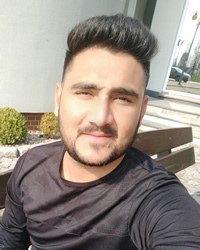Gujarati in Oman

Photo Source:
Anonymous
|
Send Joshua Project a map of this people group.
|
| People Name: | Gujarati |
| Country: | Oman |
| 10/40 Window: | Yes |
| Population: | 56,000 |
| World Population: | 2,917,000 |
| Primary Language: | Gujarati |
| Primary Religion: | Islam |
| Christian Adherents: | 1.00 % |
| Evangelicals: | 0.50 % |
| Scripture: | Complete Bible |
| Ministry Resources: | Yes |
| Jesus Film: | Yes |
| Audio Recordings: | Yes |
| People Cluster: | South Asia Hindu - other |
| Affinity Bloc: | South Asian Peoples |
| Progress Level: |
|
Introduction / History
The Gujarati dominance in world trade began with Oman, according to a 2015 article in the Times of India. Gujarati traders began as early as the 7th century, but they began to make a much bigger mark in the 15th century when they started trading in Muscat. Some of these traders were Baloch, Persian, and Sindhi, while others were Gujaratis.
Gujaratis came, they settled, they traded. Some were in government ministerial positions. After 20 years they were eligible for Omani citizenship, a rarity in the Arab world.
What Are Their Lives Like?
Though most South Asians in Oman are from far-away Kerala, the Gujaratis still make their mark, especially in the business world. They often own small shops which sell groceries, electrical appliances, or cloth. Those at the higher level are involved with high level international trade. These people hold much power in Oman.
The majority of the Gujarati are Hindus regardless of their location in the world. The Gujarati diaspora is made up of people from the Brahmin, Kshatriya, and Vaisya castes. Brahmin families usually prefer their members to be IT specialists, medical doctors or high-level businessmen. A high percentage of the Gujarati are from the Kshatriya, the military caste, though they are much more likely to work in the business arena. One of the Vaishya castes, the Banias, are another major sector of the Gujarati diaspora.
What Are Their Beliefs?
Most Gujarati in diaspora serve the great god of mammon but hold to traditional Gujarati Hindu beliefs and practices as well. Those beliefs and practices will differ widely according to details of caste and family background, and some will be deeply concerned and committed related to their traditional ways. Traditional gods and modern gurus compete for attention, with the 19th century-origin Swaminarayan movement continuing to grow and draw Gujarati involvement.
What Are Their Needs?
In many countries where there are Gujarati communities, there are no missionary agencies focusing taking Christ to them. The Bible is available in their language, but the Gujarati must see Christianity lived out. There will be obstacles to those who want to take Christ to these highly unreached Hindus. As it stands, there are very few who will dare to take that step.
Prayer Points
Pray for an intense spiritual hunger among these Hindus that will draw them into the loving arms of Jesus Christ.
Pray for the Lord to thrust out workers to the Gujarati in Oman.
Pray for a Disciple Making Movement to Christ among Gujaratis throughout the Middle East that will result in them experiencing the intense blessings of Christ.